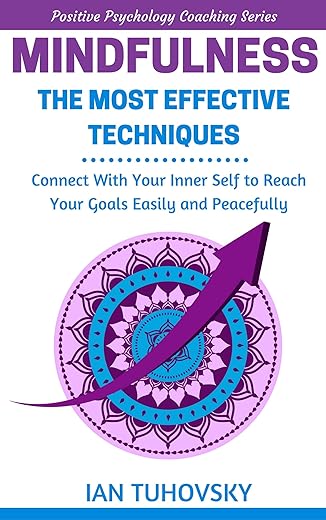Mindfulness is a transformative practice that holds immense power in reducing stress and enhancing well-being. By cultivating present-moment awareness and non-judgmental acceptance, individuals can navigate life’s challenges with greater ease. Fun fact: Did you know that mindfulness has been scientifically proven to change the brain’s structure, promoting emotional regulation and reducing stress levels? With step-by-step guidance and consistent practice, anyone can harness the benefits of mindfulness to live a more balanced and fulfilling life. Start your journey to greater peace and resilience today.
Transform Your Mind with Top Picks
Understand Mindfulness
- Start by discovering what mindfulness is. Acknowledge that mindfulness involves being fully present in the moment without passing judgment.
- Practice focusing on the current moment without getting entangled in thoughts about the past or future.
- Train your mind to observe thoughts and feelings without attaching any specific value or judgment to them.
- Engage in mindfulness activities such as meditation, deep breathing, or body scanning to hone your ability to be fully aware without criticism.
Start with Breathing Exercises
- Practice deep breathing to calm your mind and body. Focus on slow, deep inhalations for a count, then slowly exhale, releasing tension with each breath. Ensure your surroundings are quiet and comfortable to enhance the practice. Make deep breathing a regular part of your mindfulness routine.
Body Scan Meditation
- Focus on your breathing to center yourself.
- Start from the top of your head, and slowly scan down through your body.
- Pay attention to any tension or emotions you might feel in each part.
- Take deep breaths, letting go of any stress or discomfort as you move through each area.
Practice Mindful Walking
- Step out of your door and feel the ground beneath your feet.
- Maintain a slow pace, focusing your attention on the movement of your body with each step.
- Tune in to the sensations in your feet, legs, and the rest of your body as you walk in the present moment.
Mindful Eating
- Savor Each Bite: Chew slowly and pay attention to the taste of each bite as you consume your meal.
- Focus on Flavors and Textures: Take time to notice the different flavors and textures of the food you are eating.
- Be Present in the Moment: Engage fully in the act of eating by eliminating distractions and savoring the entire experience.
- Practice Gratitude: Show appreciation for the nourishment you are providing your body with by being mindful of your meals.
Observe Thoughts and Emotions
- Practice being aware of your thoughts and emotions.
- Detach yourself from them by stepping back and observing without judgment.
- Create distance between yourself and your emotions; for example, when feeling angry, say to yourself, “I am noticing anger arising in me.”
- Develop mindfulness to cultivate a non-judgmental viewpoint when observing your inner experiences.
Gratitude Practice
- Begin your day by reflecting on at least three things you are grateful for. Take a moment to truly feel appreciation for each of them.
- Consider keeping a gratitude journal to note down these things daily or whenever you feel appreciative.
- Express your gratitude outwardly by thanking others or by doing something kind for those who have positively impacted your life.
Consistent Practice
- Incorporate mindfulness routines every day
Plan to begin each morning or end your day with a brief mindfulness exercise to help center yourself and boost your overall well-being. For example, set aside 5-10 minutes daily to focus on your breathing or practice gratitude by journaling a few things you are thankful for. - Create cues throughout your day
Establish reminders—like a particular sound, sight, or action—that prompt mindfulness moments. For instance, every time you receive a text message, take a moment to pause, breathe deeply, and refocus your thoughts before continuing with your day. - Engage in mindful activities
Integrate mindfulness into ordinary tasks like washing dishes or going for a walk, paying close attention to the sensations, sights, and sounds you experience. Take a moment to mindfully engage in an enjoyable activity, whether it is taking photos, sipping tea, or spending time in nature.
Embrace peace and tranquility
Conclusion:
In conclusion, incorporating mindfulness practices into your daily routine can be a powerful tool in managing stress. By being present in the moment and practicing mindfulness, individuals can experience greater peace, clarity, and resilience in navigating life’s challenges. Start implementing mindfulness techniques today to connect with the present moment, reduce stress, and cultivate a sense of well-being.
Mindfulness Essentials
Effective Stress Management Strategies
Step-by-Step Guide to Incorporating Mindfulness Techniques into Your Daily Routine
- Find a quiet and comfortable space to sit or lie down
- Focus on your breathing, taking deep breaths in and out
- Acknowledge any thoughts or distractions that come up, and gently guide your focus back to your breath
- Practice mindfulness for a few minutes every day, gradually increasing the time as you feel more comfortable
- Be patient with yourself and remember that mindfulness is a skill that takes practice
Frequently Asked Questions on Mindfulness Techniques
How can mindfulness be practiced in different environments and settings?
Mindfulness can be practiced in various environments and settings to promote a sense of presence and awareness. Here are some ways it can be incorporated:
- **At Home:** One can practice mindfulness at home through activities such as seated meditation, breathing exercises, body scan meditation, or simply being fully present during everyday tasks like cooking or cleaning.
- **At Work:** In a professional setting, mindfulness can be practiced by taking short breaks to focus on deep breathing, conducting walking meditation during breaks, or practicing mindful listening during meetings.
- **Outdoors:** Being in nature offers an excellent opportunity for mindfulness practice. One can engage in activities such as forest bathing, mindful walking or hiking, or simply sitting and observing the natural surroundings.
- **Gym or Exercise:** During workouts or physical activities, mindfulness can be practiced by focusing on bodily sensations, breathing rhythm, and staying present in the moment rather than getting lost in thoughts.
- **Social Settings:** Mindfulness can also be integrated into social interactions by practicing deep listening, being fully present in conversations, and practicing compassion and empathy towards others.
What are some common mindfulness practices and exercises?
Some common mindfulness practices and exercises include meditation (focused breathing, loving-kindness, body scan), mindful eating, walking meditation, yoga, journaling, and progressive muscle relaxation. These activities aim to increase self-awareness, reduce stress, and enhance overall well-being. Practicing mindfulness regularly can help individuals cultivate a deeper connection with themselves and better cope with daily challenges.
How can practicing mindfulness techniques benefit mental health?
Engaging in mindfulness techniques has been shown to offer numerous benefits for mental health. Practicing mindfulness, such as meditation and intentional breathing, can help individuals become more aware of their thoughts and feelings without judgment. This awareness can lead to enhanced emotional regulation, reduced stress levels, increased focus and concentration, and improved overall well-being. Additionally, mindfulness techniques have been linked to decreased symptoms of anxiety, depression, and other mental health conditions. By incorporating mindfulness into daily routines, individuals may experience a positive impact on their mental health and quality of life.
What are some tips for beginners looking to start a mindfulness practice?
For beginners looking to start a mindfulness practice, here are some tips to help you get started:
- Start small: Begin with short sessions, even just 5-10 minutes a day, and gradually increase your practice as you become more comfortable.
- Find a quiet space: Choose a peaceful spot in your home or out in nature where you can sit or lie down comfortably without distractions.
- Focus on your breath: Concentrate on your breathing, feeling the sensation of each inhale and exhale to help anchor yourself in the present moment.
- Be gentle with yourself: Accept that your mind may wander during your practice, and when it does, simply bring your attention back to your breath without judgment.
- Use guided mindfulness exercises: Utilize apps, podcasts, or online resources to help guide you through mindfulness practice until you feel comfortable doing it on your own.
- Be consistent: Establish a daily routine for your mindfulness practice to build the habit and experience the long-term benefits of mindfulness.
How does mindfulness help in cultivating self-awareness and acceptance?
Practicing mindfulness can greatly assist in cultivating self-awareness and acceptance. By being in the present moment and paying attention to one’s thoughts and feelings without judgment, individuals can develop a deeper understanding of themselves. This heightened self-awareness enables them to identify their thought patterns, emotional triggers, and behaviors more clearly, facilitating personal growth and self-improvement.
Mindfulness also fosters self-acceptance by promoting a compassionate and non-judgmental attitude towards oneself. Through mindfulness practices like meditation and breathing exercises, individuals learn to embrace their thoughts and emotions without becoming enmeshed in self-criticism or negativity. This non-reactive awareness helps them acknowledge their strengths, weaknesses, and limitations with kindness and understanding, fostering a sense of self-acceptance and nurturing a positive self-image.
Overall, integrating mindfulness into daily life can lead to a greater sense of self-awareness and acceptance, empowering individuals to cultivate a more profound connection with themselves and others.
How can mindfulness techniques be integrated into daily habits and routines?
Mindfulness techniques can be integrated into daily habits and routines by starting with simple practices that can be woven seamlessly into your day. These include mindful breathing exercises during routine tasks, setting aside designated times for mindfulness meditation, incorporating mindful walking or eating during meals, and being fully present in the moment during daily activities such as showering or driving. Consistency is key in developing mindfulness as a habit, so gradually incorporating these techniques into your daily routine will help make them a natural part of your day.



















I found that incorporating mindful breathing exercises into my morning routine helped me start the day with a clear mind. Do you have any suggestions for maintaining mindfulness throughout the day?
I’m glad to hear that the breathing exercises were helpful! I can certainly include tips on sustaining mindfulness throughout the day in future articles. Thank you for your input.
Thank you for your feedback! I will definitely consider adding a section on incorporating mindfulness techniques during a hectic workday in future articles.
I think a comparison between different mindfulness practices and their effectiveness in reducing stress would be enlightening. It could help readers determine which techniques suit them best.
A comparative analysis of mindfulness practices sounds like a great idea for an informative article. Thank you for the suggestion! I will work on incorporating such comparisons in future content.
I would love to see an article discussing the science behind mindfulness and stress reduction. It would be interesting to learn more about the physiological effects of these practices.
Thank you for the suggestion! Exploring the scientific basis of mindfulness is a great idea for a future article. I will definitely consider it.
I adapted the body scan meditation to focus on specific areas of tension in my body, which helped me release stress more effectively. Sharing different variations of meditation techniques could be beneficial for readers.
That’s a fantastic adaptation! I appreciate you sharing your experience. Providing variations on meditation techniques is a great idea to enhance the guide. Thank you!
I would be interested in hearing success stories from individuals who have significantly reduced their stress levels through mindfulness. Real-life examples could inspire and motivate readers.
Thank you for the suggestion! Sharing success stories of stress reduction through mindfulness is a powerful idea. I will work on incorporating such stories into upcoming articles.
What are your thoughts on using mindfulness as a tool for improving sleep quality? I believe exploring this topic could provide valuable insights for readers struggling with sleep issues.
That’s an excellent topic to delve into. Mindfulness techniques for improving sleep quality can indeed be very beneficial. I will consider writing about this in the future. Thank you for your suggestion!
I tried practicing mindful eating and found it very beneficial in improving my relationship with food. Do you have any recommendations for extending mindfulness to other daily activities?
I really enjoyed the guide and found the steps easy to follow. Could you provide additional tips on how to incorporate mindfulness into a busy workday?